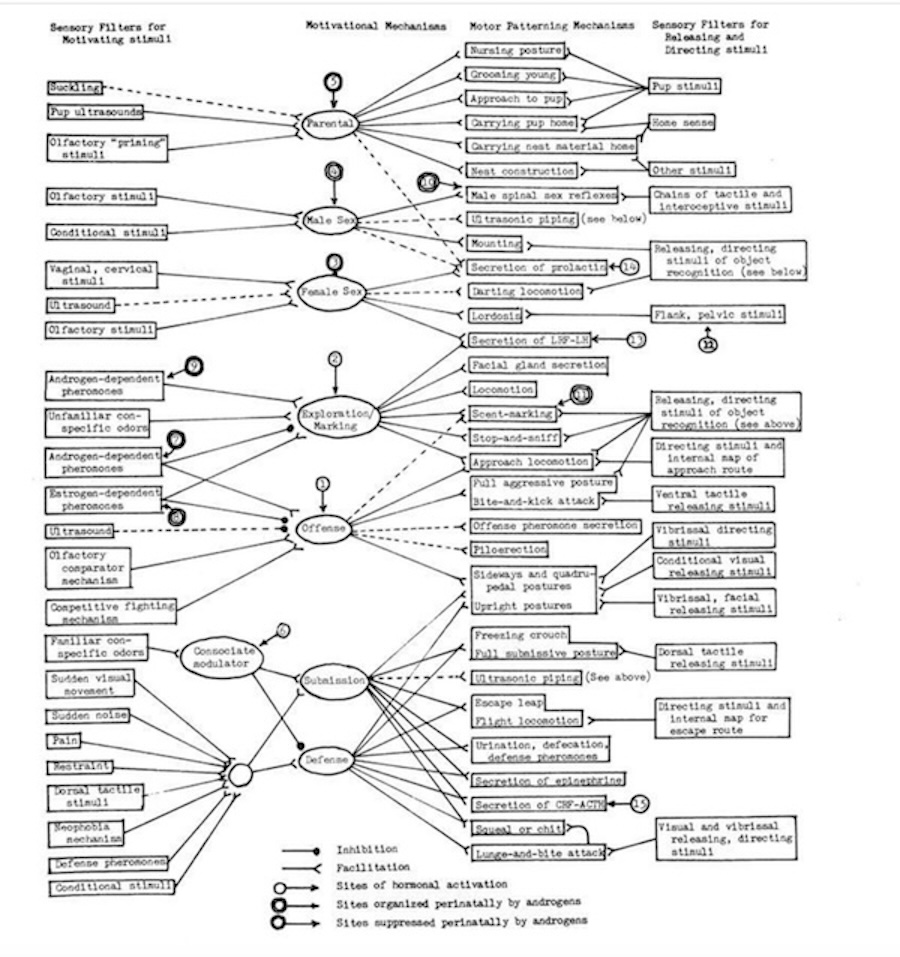Stories
The brain mechanisms of aggression
Motivational systems of social behavior
International Society for Research on Aggression
Behavior Genetics Association Ethics Committee
The World Wide
Runners Club
for Peace
United Nations University for Peace
Charlie Robbins, barefoot runner
* * *
Although most of my laboratory studies and publications were devoted to the brain mechanisms of aggression, I needed to put that into a more general context of the motivational systems of social behavior. As described in my paper, Motivtional Systems of Social Behavior in Male Rats and Monkeys: Are They Homologous?, these motivational systems include not only offense, defense, submission and sexual behavior (both male and female), but also a system of patrol/marking in rodents and display in primates. That study also suggested separate systems for allo-grooming and self-grooming, although they may be subsets of the same or another system. Another motivational system of social behavior, parental behavior, was not included, but was discussed elsewhere, as shown below.
Extrapolating that analysis to human behavior, we may see the following correspondence.
Offense: anger and angry attack
Defense: fear and fearful attack
Male sexual behavior
Female sexual behavior
Parental behavior
The human behavior of display is best seen in the shouting and arm-waving by the fans cheering at a football match, which corresponds perfectly to the display of monkeys when they meet another troop at the borders of their territories. It can also be seen in individuals who "jump for joy" when they they receive very exciting news. As far as I know, the brain mechanisms of the display motivational system have never been investigated.
What about the human equivalent of submissive behavior? At the risk of ridicule, may I suggest that this is what we mean by "falling in love." Just as the consociate modulator in rodents modulates defense behavior into submission, so the human probably has a similar mechanism which lowers the defensive behaviors and allows intimacy.
In one of my early studies, developed in the 1970's but never published or updated to include more recent information, I proposed that these motivational systems are controlled by the action of hormones on 15 specific sites in the brain.
As shown in the preceding diagram which applies to rodents, but which is also applicable to humans, in addition to actions on the sensory and motor mechanisms, the hormones directly effect the central motivational mechanisms as follows:
- the offense motivational mechanism is inhibited by estrogen/progestin and by ACTH and facilitated by prolactin.
- the exploration/marking motivational mechanism; activated by androgen and estrogen (in rodents but not humans).
- the female sex motivational mechanism; suppressed perinatally by androgen and activated in adulthood by estrogen, progestin, and luteinizing hormone-releasing factor
- the male sex motivational mechanism; organized perinatally by androgen and activated in adulthood by androgen
- the parental motivational mechanism; suppressed perinatally by androgen, activated in the adult by estrogen and by decreasing levels of progestin and (possibly) inhibited by ACTH or corticosteroids
These hormones, determine the reproductive state of the animal or person, of which there are a number of different states:
- Female Reproductive Readiness State
- Female Reproductive Fulfillment State
- Female Reproductive Postponement State
- Male Reproductive Readiness State
- Male Reproductive Postponement State
As described on another page, the reproductive postponement states are the basis of what is considered to be mental illness.
In addition to these reproductive states, I proposed that there may be another reproductive state, an emigration state, for which the hormonal control and brain mechanisms are not known.
 |
Stages
1986-1992
Fall of Soviet Empire
1992-1997
UNESCO Culture of Peace Programme
